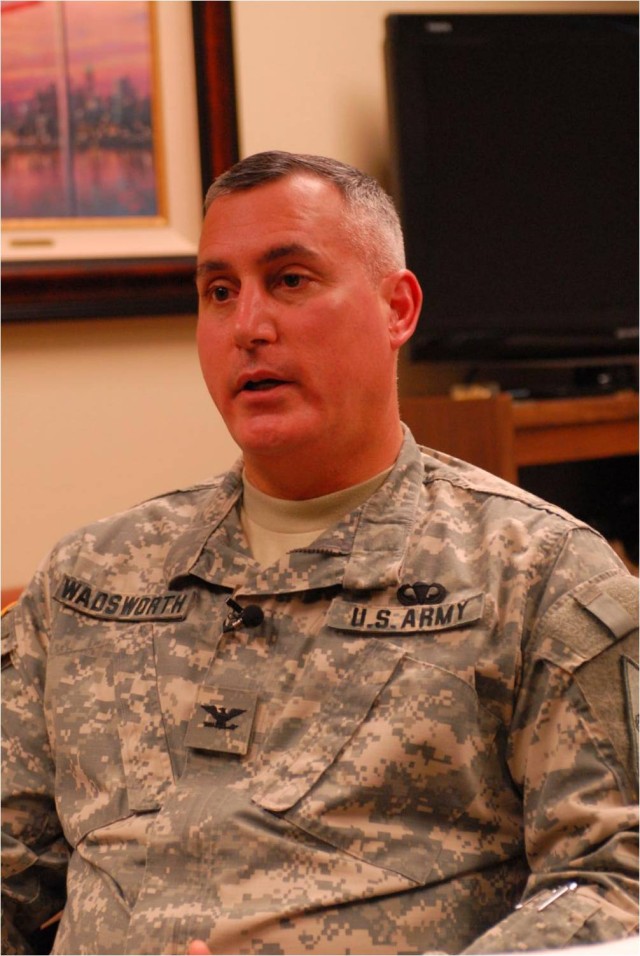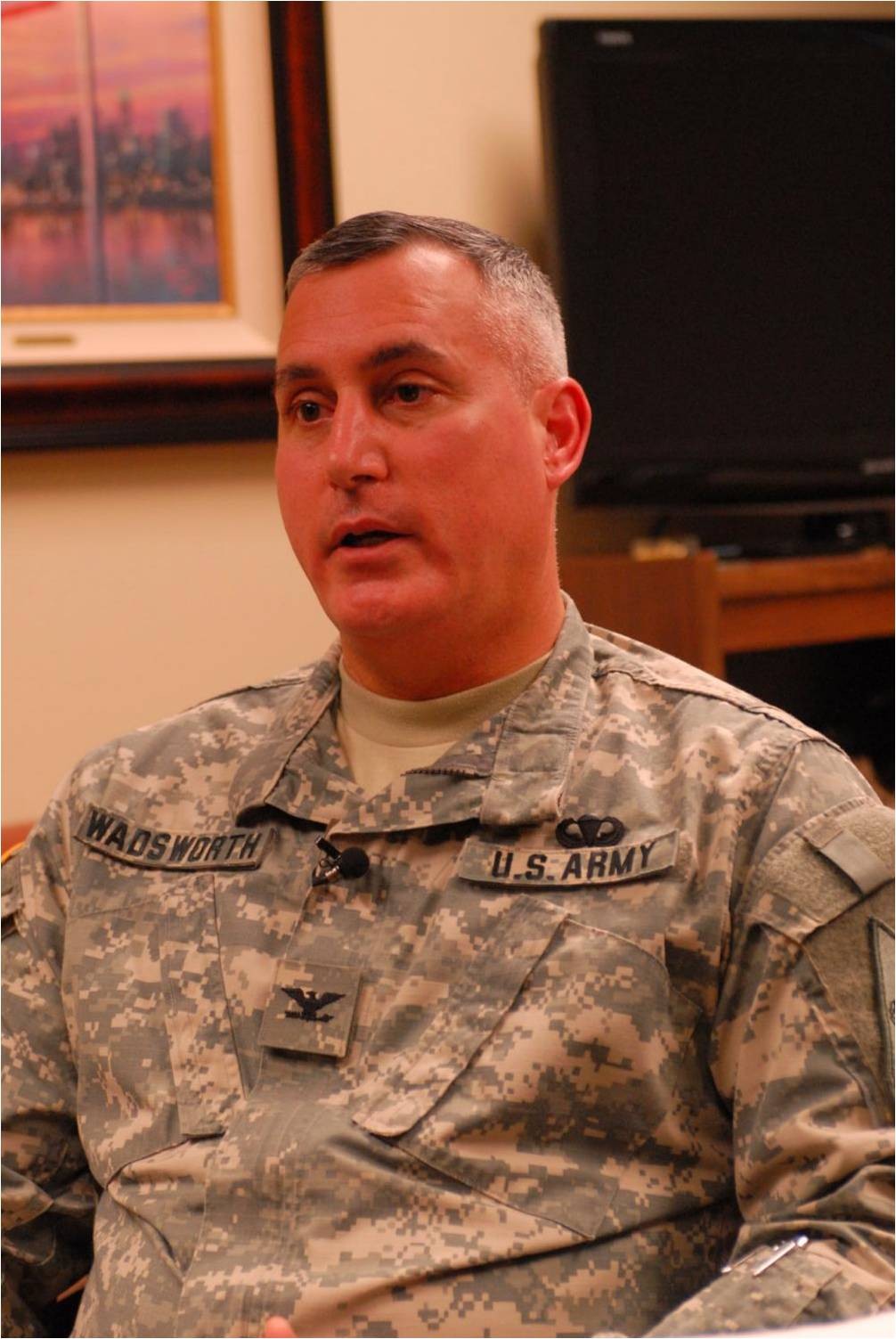FORT BENNING, Ga. - Fort Benning's Maneuver Center of Excellence has received its first Armor School Soldier.
COL Michael Wadsworth, the Armor School assistant commandant, arrived here Jan. 13 from Fort Knox, Ky., and immediately went to work paving the way for future waves of Armor and Cavalry Soldiers. He said about 70 additional personnel will show up between July and September as part of the advance party.
The first Armor School course taught at Fort Benning is scheduled for February 2011, while the largest personnel increases will occur in July and August of next year.
"It's a great honor ... being the first guy on the ground here from the Armor School," he said. "What we have here is an opportunity to identify best practices between the Infantry and Armor communities, and apply them across the Maneuver Center of Excellence, to get a better institutional training product for the operating force. Both sides recognize that and embrace this as an opportunity to get this right for our Army."
Fort Knox has been Armor's home for 70 years, but the move to Fort Benning should be complete by September 2011 under Base Realignment and Closure requirements.
"Folks are excited about moving down here," Wadsworth said. "I don't think there's anybody back at Fort Knox who isn't on board and working hard to support the school's movement down here to Fort Benning ... This is a great new chapter in the history of the Armor School."
The MCOE officially cranked up operations in October, and although Armor has consolidated with the Infantry Center and School, both branches will retain their own identities. Under the reorganization, Infantry and Armor second lieutenants, captains and noncommissioned officers will train at Fort Benning - along with 52 percent of all new Soldiers.
Wadsworth said the historic merger at Fort Benning presents the prospect for tighter integration between the Armor and Infantry branches.
"It will generate some efficiencies in the way we train," he said. "We will have opportunities to train Armor and Infantry Soldiers together on the same terrain, from young privates and lieutenants to our captains. I think we'll get a better maneuver officer out of the experience, and the Army will benefit from it."
In the past year, Wadsworth said he's toured the massive projects under construction in Harmony Church several times. He called the progress and amount of resources devoted to accommodating the Armor School and its hardware "impressive."
The facilities are "purpose-built" to support the training of Armor and Cavalry Soldiers, contrary to Fort Knox, where they evolved into existing infrastructure over time, he said. Having classrooms and simulators in the same location will improve efficiency.
"It's a great opportunity for us," he said. "Once we're up and running, it'll be a world-class training environment for mounted Soldiers."
Wadsworth said the Armor School has become heavily reliant on simulation because of the money it takes to drive vehicles and equipment out to the field. It costs about $900 a mile to operate a tank, so the machines will often be transported to training ranges to help save in operating expenses.
Armor and Cavalry leaders also have modified their approach to training since the war on terrorism began, he said. Before Sept. 11, about 75 percent of the force trained on tanks in conventional warfare, with only a quarter doing mounted and dismounted Cavalry-type tasks.
He said the numbers are flipped now, as roughly 75 percent of the effort is geared toward training Soldiers in reconnaissance-focused tasks normally associated with Cavalry organizations, while 25 percent is spent on traditional Armor tasks.
"That better supports the nature of the fight on the ground we're experiencing today in Iraq and Afghanistan," he said.
To ensure a seamless transition of Armor courses to Fort Benning, units will be brought down in increments as facilities become Soldier-ready, Wadsworth said. Planners set up 90-day windows for organizations to end classes at Fort Knox and start training here. That includes 30 days to pack up at Fort Knox, 30 days to relocate to Fort Benning and 30 days for setup and preparation of training delivery at Harmony Church.
He said more visual signs of Armor's arrival will be seen in February, when the 233rd Transportation Company begins bringing down the first batch of about 170 armored vehicles that are part of the Armor School Museum. September is targeted for the second movement. Upon arrival, the vehicles will be stored at Sand Hill until completion of the Armor Storage Facility in fiscal year 2013.
Meanwhile, several hundred more tanks, support vehicles, simulators and associated equipment used to train Armor Soldiers will be hauled here in the spring and summer of 2011 via commercial heavy equipment transport vehicles.


Social Sharing